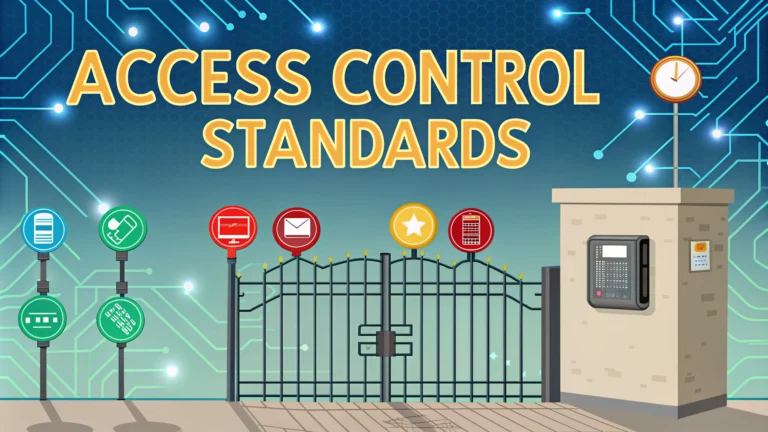Access control standards protect organizations from unauthorized access while ensuring smooth operations for legitimate users.
Understanding and implementing these standards through penetration testing helps identify vulnerabilities before malicious actors can exploit them.
Regular testing of access control mechanisms validates security measures and maintains compliance with industry regulations.
Core Access Control Standards
- Authentication (Identity verification)
- Authorization (Permission management)
- Accounting (Activity logging)
- Non-repudiation (Action traceability)
Testing Authentication Controls
Test password policies for complexity requirements, including minimum length, special characters, and expiration periods.
Verify multi-factor authentication (MFA) implementation across all critical systems.
Check for session management vulnerabilities like token exposure or insufficient timeout settings.
Authorization Testing Methods
- Role-based access control (RBAC) validation
- Privilege escalation attempts
- Horizontal and vertical access control testing
- API endpoint authorization checks
Common Testing Tools
| Tool Name | Primary Use |
|---|---|
| Burp Suite | Web application security testing |
| OWASP ZAP | Automated security scanning |
| Metasploit | Penetration testing framework |
Best Practices for Testing
- Document all test cases and results
- Use both automated and manual testing approaches
- Test in staging environments first
- Validate fixes after remediation
Common Access Control Vulnerabilities
- Insecure direct object references (IDOR)
- Missing function-level access control
- Broken authentication mechanisms
- Insufficient session management
Compliance Requirements
Different industries have specific access control testing requirements defined by standards like PCI DSS, HIPAA, and SOC 2.
Regular penetration testing schedules should align with compliance frameworks and risk assessment findings.
Reporting and Documentation
- Document test scope and methodology
- List identified vulnerabilities with severity ratings
- Provide clear remediation steps
- Include technical evidence and screenshots
Next Steps for Implementation
Start with a risk assessment to identify critical assets and access points requiring testing.
Develop a testing schedule that balances security needs with operational impact.
Contact qualified security professionals or certification bodies like CREST (www.crest-approved.org) for testing support.
Testing Frequency Guidelines
Establish regular testing intervals based on system criticality and compliance requirements:
- Critical systems: Monthly or quarterly testing
- Standard applications: Bi-annual testing
- After major changes: Immediate testing required
- Compliance-driven: As per regulatory requirements
Advanced Testing Scenarios
Cloud Access Controls
- IAM policy validation
- Container security testing
- Serverless function permissions
- Cross-account access reviews
Mobile Application Testing
- Client-side access control verification
- Token storage security
- Biometric authentication testing
- OAuth implementation review
Incident Response Integration
Link penetration testing results with incident response procedures:
- Create specific response plans for identified vulnerabilities
- Establish escalation procedures for critical findings
- Maintain communication channels between testing and response teams
- Document lessons learned for future testing cycles
Strengthening Your Security Posture
Regular access control testing forms the foundation of a robust security program. Organizations must maintain continuous assessment cycles while adapting to emerging threats and technologies.
Implement a risk-based approach to testing, focusing resources on critical assets and high-impact vulnerabilities.
Stay current with industry standards and testing methodologies to ensure comprehensive coverage of access control mechanisms.
FAQs
- What is the primary purpose of access control penetration testing?
Access control penetration testing aims to identify vulnerabilities in authentication mechanisms, authorization controls, and privilege management systems to ensure unauthorized users cannot gain access to protected resources. - Which are the main types of access controls that should be tested?
The main types include physical access controls, logical access controls, administrative controls, and technical controls such as role-based access control (RBAC), mandatory access control (MAC), and discretionary access control (DAC). - What common vulnerabilities are identified during access control penetration testing?
Common vulnerabilities include broken authentication, insufficient session management, insecure direct object references, missing function-level access controls, and privilege escalation opportunities. - How often should access control penetration testing be performed?
Access control penetration testing should be performed at least annually, after significant system changes, when new access control mechanisms are implemented, or when compliance requirements mandate specific testing intervals. - What testing methodologies are used in access control penetration testing?
Testing methodologies include black box, white box, and gray box testing approaches, following frameworks like OWASP Testing Guide, NIST SP 800-115, and PTES (Penetration Testing Execution Standard). - What tools are commonly used for access control penetration testing?
Common tools include Burp Suite, OWASP ZAP, Metasploit, Hydra, John the Ripper for password testing, and specialized access control testing tools like AuthMatrix and AuthZ. - How are privilege escalation attacks tested during access control assessments?
Privilege escalation testing involves attempting vertical and horizontal privilege escalation, testing for missing authorization checks, and exploiting role-based access control misconfigurations. - What compliance standards require access control penetration testing?
Standards requiring access control testing include PCI DSS, HIPAA, SOX, ISO 27001, and NIST frameworks, each with specific requirements for access control assessment and validation. - How are session management vulnerabilities tested in access control assessments?
Session management testing includes analyzing session token generation, validation, expiration, and security controls, as well as testing for session fixation, hijacking, and replay attacks. - What should be included in an access control penetration testing report?
Reports should include identified vulnerabilities, risk ratings, detailed technical findings, exploitation proof of concept, business impact analysis, and specific remediation recommendations.







